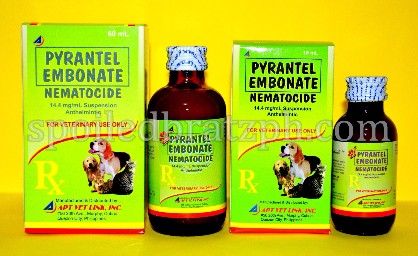deworming medicine for kittens
Cat Worm Symptoms
Hookworm larvae both penetrate cats' pores and skin, or the liner of their mouth. Not like roundworm, hookworm cannot be passed to kittens through their mom's milk. Sometimes, deworming remedy should be administered bi-weekly or month-to-month. The therapy is just not a one-time deal. As uncommon as they are, lungworms are harmful. They affect a kitten's lungs and could be caught when a cat or kitten ingests an infected animal like a mouse or a hen. Please don't try to deal with your pet your self-your cat should be handled for the particular type of worms he has. A dewormer that eradicates tapeworms, for example, won't kill roundworms. And some over-the-counter deworming medicines could be dangerous. After your vet has precisely recognized the kind of parasite your pet has, she or he will then prescribe the perfect course of therapy, which can embrace an oral deworming agent.Best Over The Counter Cat Dewormer
As a matter of fact, a 2008 study was carried out to prove the effectiveness of garlic against parasites corresponding to worms. Over the course of 7 days, mice got crushed garlic to kill and take away the worms current. In response to the research, mice that acquired the garlic have been cleared of parasites at a rate of ninety one% success. Inside a cat's tummy, tapeworms latch onto the wall of the gut and soak up nutrients from the cat's own eating regimen. Grownup hookworms take up residence in cats' small intestines, the place they latch onto the wall of the intestine and suck blood.Some deworming remedies work in a single dose, others should administered over a number of doses. This is the most common kind of cat parasite. Grownup cats can get roundworms from hanging round contaminated feces, whereas kittens often get roundworms from their moms' milk. Tapeworms are usually lengthy flat worms composed of many segments. Mature segments containing eggs are released from the top of the tapeworm and are handed in the faeces. These segments typically resemble grains of rice and may typically be seen on the hair around the anus of the cat, in the faeces and on the cat's bed.
Dewormer For Kittens Under 12 Weeks
In case your vet confirms a worm infection, they're more likely to advise a course of deworming treatment. Heartworms are significantly the worst form of worms. They can be simply caught from mosquito bites and can affect the cat's whole cardiovascular system, ultimately leading to coronary heart failure. Houses with youngsters, immune-compromised people, or aged persons ought to deworm pets to forestall the opportunity of zoonotic an infection. Zoonotic infections are infections that happen in pets and will be transmitted to folks. Roundworms and hookworms from pets trigger hundreds of zoonotic infections in people within the U.S. yearly. These infections cause blindness, illness, and demise.Dewormer For Kittens Under 12 Weeks
Examine your cat's gums. Normally, a cat's gums must be pink. Parasites, like many worms trigger gums to turn pale by way of anemia or sheer shock. If you cat has pale gums, schedule a vet appointment. If your cat has problem breathing or is lethargic, search emergency help. This keeps the parasite burden in your pet low, and protects them the well being dangers of carrying plenty of worms. Hookworm infections are extra common in dogs than cats, so your cat is more likely to catch hookworm if they also have canine companions at home.